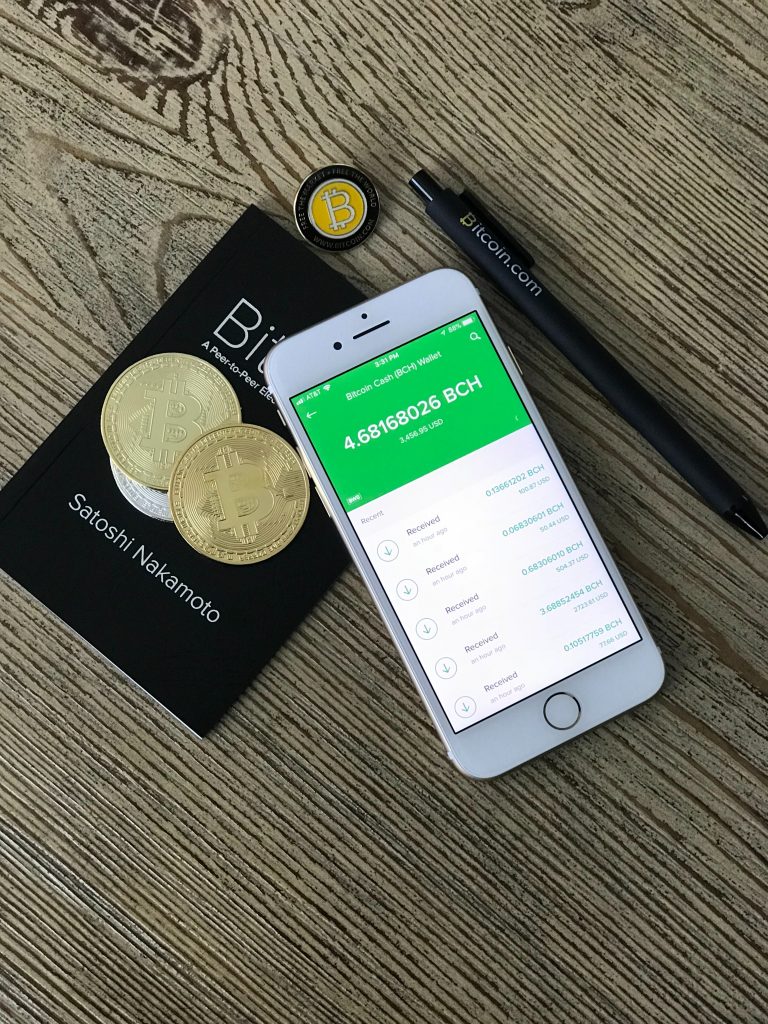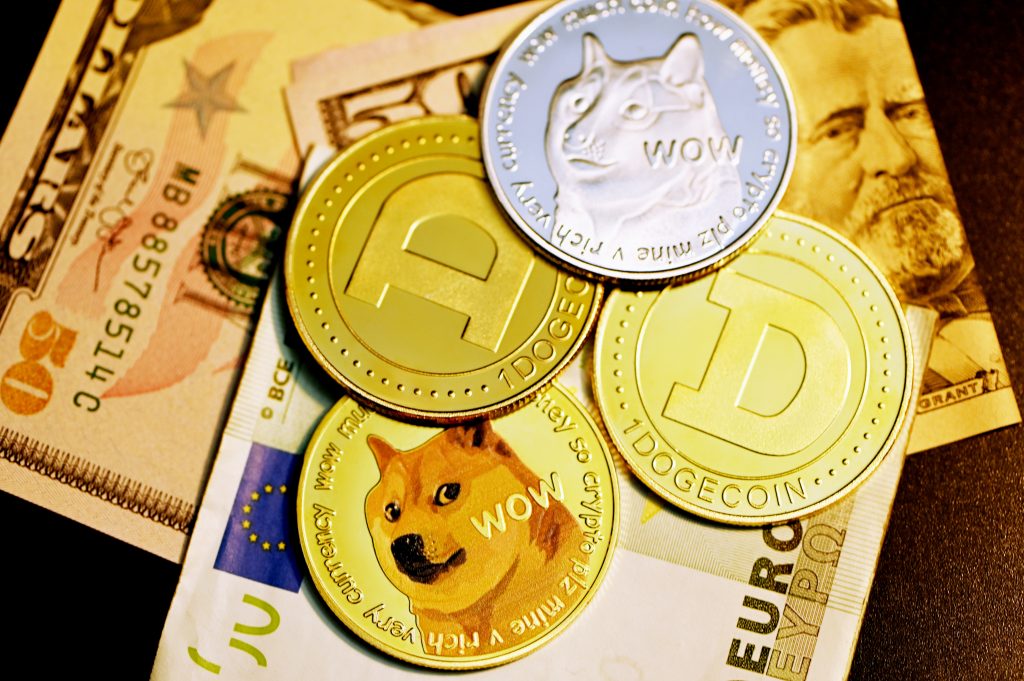
How Cryptocurrency is Opening a Stake in Real Estate

Innovations in crypto and blockchain could lead the way forward for the real estate industry of tomorrow.
There’s an ancient proverb you may be familiar with; it goes something like, “There’s an app for that.” Tracking your health, learning a new language, making it look like you’re drinking a beer out of your phone—time has shown that if we want to make a complex task simple, all we need to do is digitize the process.
Between Bitcoin, Ether, and many more cryptocurrencies (yes, even Dogecoin), the same appears true for economics. There is no question that cryptocurrency and blockchain technologies are innovating how people buy and sell assets. However, the implications and applications of these innovations are not strictly limited to online activities like purchasing a piece of digital artwork for $69 million. Even real estate, an industry we think of as deeply rooted in the physical world, is making space for crypto and blockchain.
Making Digital Sense of Digital Cents
Before we go any further, a quick breakdown for the uninformed: A cryptocurrency is, simply, a digital currency. It has value, and it can be exchanged for goods and services; the only difference is you can’t hold it in your hand. As many as 10,000 different types exist, traded like stocks with corresponding values that fluctuate based on demand and other outside factors—for example, the contents of a Saturday Night Live monologue.
Blockchain is a digital ledger at its core, an endlessly running and completely transparent list of all transactions. Working off this technology allows for the decentralized transfer of funds—as in, there is no involvement of a central authority like a bank—between parties in a secure manner. The built-in transparency of blockchain dramatically lessens the odds that one party can manipulate the system.
Maybe the Paper is Digital

Now, where does the famously flexible and adaptable world of real estate come in? Well, if the website for an outlet as down-the-middle mainstream as HGTV is publishing an article titled “How to Buy a House With Bitcoin,” then in some ways, the real estate industry is already in. Though the overall number is still small, more and more sellers in the United States have begun accepting cryptocurrency as a form of payment. In fact, according to Yahoo Money, the number reached its highest rate ever earlier this year, at 14.3 listings per 100,000 homes. Relatively speaking, a tiny number, but nonetheless a growing number. Even high-profile developments like Miami’s Arte Surfside, and industry billionaires like Rick Caruso, have announced their embrace of digital currency. For the meme-loving investors among us, a luxury apartment complex in Portugal announced it will start accepting Dogecoin.
There are applications beyond payment as well, such as the use of smart contracts. In these, the terms and agreements you would typically see expressed over many sentences in a conventional contract are written as computer code. Parties entering into a smart contract automatically agree to fulfill it when the terms are met, potentially eliminating the need for any third-party intervention. Obviously, agents contribute plenty of valuable work regarding the listing, marketing, and ultimate selling of a property. Yet, if nothing else, smart contracts could at least cut down on paperwork and fees, saving untold time and alleviating countless headaches.
Fractional ownership merges crypto and real estate in a way that could democratize investment. Owning a building can be boiled down to possessing a piece of paper that states the property belongs to you. What crypto and the blockchain presuppose is, “Maybe that piece of paper is digital.” And no, not digital like a PDF. Platforms like RealT use the blockchain to list real assets (in this case, residential buildings) as tokens, digital symbols of ownership, capable of being traded like they were a cryptocurrency.
Much like you can buy fractions of Bitcoin, prospective investors from anywhere in the world can purchase portions of interest into an LLC that controls a property at potentially minimal cost (on RealT, a minimum investment currently ranges between $50-$150). After that, all one has to do is (hopefully) watch their investment grow. Inherently a bit of a lazy person’s game, the fractional ownership and tokenization of real estate allow one to stake in a property and make money without having any management responsibilities.
Computer World

Cryptocurrency “mining,” the process of verifying transactions in the blockchain, takes serious computing power.
While crypto and blockchain have many utilizations for real estate, the biggest collision of these spaces isn’t even occurring in the physical world. In March of this year, “Mars House”—a 3D rendering of an extraterrestrial home—sold for 288 Ether, equivalent to more than half a million dollars at that time. “Mars House” isn’t an actual place. There is no house on Mars that this buyer gets to retire to. Instead, “Mars House” is an NFT, a non-fungible token.
Generally speaking, an NFT represents the digital ownership of a singular piece that cannot be replicated. A great real-world example of an NFT is an airline ticket: Sure, there are thousands of them out there at any given time, but each one is unique in that they have a specific seat, departure time, destination, etc. Every NFT created gets its own token on the blockchain, a distinct entry on the ledger. So, like any limited commodity, NFTs have naturally become very lucrative sales objects. Nowhere is this more seen than in the burgeoning universe of virtual real estate, combining the most promising aspects of smart contracts and fractional ownership. After all, who said real estate has to be real?
If you can, picture Level 1-1 in Super Mario Bros. Imagine everything from the start of the stage to the first pipe was yours to customize however you wanted. Technically, this is similar to the concept behind the Super Mario Maker series, but several online games have been taking the idea to its logical extreme, allowing users to craft their own world within a vaster one. Chief among these games is Decentraland.
Unlike in most video games you’ve played, there is no objective to Decentraland. The shared virtual world—commonly referred to as a “metaverse”—only exists for users to create. It has its own cryptocurrency (known as “MANA”), its own ecosystem, its own economy. Players buy a plot of land—fittingly called “LAND” in the game—and are free to do with it as they wish: hire a 3D developer as a virtual contractor and architect, make inroads in the multi-billion dollar video game advertising industry by selling digital billboard space, create an art gallery and charge admission, it’s all on the table. That freedom, along with a by-design limit on LAND available—the number is currently capped at 90,000—has helped these virtual property values to skyrocket.
According to Republic, a private investment platform, a plot sold for $500 in early 2019 is today trading for over $7,860. A 66,304 virtual square meter area sold for over $900,000 in June, setting a new record. More than 50,000 sales have occurred on the secondary market, totaling over $30 million. All LAND today is worth approximately $100 million, a value that is only growing.
It all sounds very “real-world real estate” in how prices are being driven up by the laws of supply and demand, but virtual real estate does differ in one fundamental way: the ideology of “location, location, location” being a determining factor in value is out the window. Online, players can quickly teleport from place to place, rendering things like visibility and foot traffic far less significant. The difference and distance between, say, a Brooklyn Heights and a Paducah (sorry, Paducah) are negated via the input of coordinates; it’s the ingenuity of Decentraland’s community members and their designs that matter more than any location or budget.

Brave New World?
All of the above is not to say that any prospective real estate buyer, seller, or investor should dive head-first into crypto and never look back. In the gentlest of terms, crypto is remarkably volatile. Of course, many people enjoy the space specifically because of its volatility. Still, it is certainly something to consider before blowing your savings and being put in the “dogehouse” by those you love most.
There are also very valid concerns and considerations to pay toward the environmental impact of crypto. In particular, it is estimated that an average NFT uses more electricity than the average EU citizen does in a month. At the same time, the Bitcoin network itself consumes more energy than the entire nation of Argentina.
Nevertheless, if resources are put together to explore the options, there is a future somewhere out there for real estate in the crypto space.




